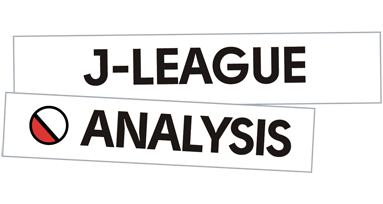The 2019 champions, Yokohama Marinos, faced off against Shimizu S-Pulse, where former Yokohama Marinos assistant coach Peter Cklamovski now serves as the head coach. The match up between these two teams is very interesting, as Peter Cklamovski served under Ange Postecoglou, former head coach for the Australian national team and current manager for Yokohama Marinos, for many years. In retrospect, this game illustrated a true battle between an apprentice and his master, much like the recent EPL match up between Manchester City and Arsenal with Pep Guardiola versus Mikel Arteta.
In this tactical analysis, we will examine how Yokohama Marinos tried to persevere with their dynamic attacking style, and how Shimizu S-Pulse showcased their new style of football under Peter Cklamovski as they challenged Yokohama Marinos.
Lineups
Yokohama Marinos in white, manager Ange Postecoglou displayed 4-4-1-1. The defensive line consisted of Ken Matsubara, Ryo Takano, Thiago Martins, and Yuki Saneto. Ahead of the backline, Marcos Junior, Takuya Wada and Takuya Kida acted as a dynamic three man midfield. In front of the highly mobile midfield, the newly acquired forward, Daizen Maeda from Matsumoto Yamagata led the line. In addition to Maeda, Junior Santos and Teruhito Nakagawa formed the three man front line.
In contrast, the challenger opted for 4-2-3-1. The defensive line consisted of Seok Ho Hwang, Yugo Tatsuta, Valdo, and Ryo Okui. Ahead of the four man defensive line, Ryo Takeuchi and former Palmeiras man, Renato Augusto, formed a two man defensive block. Kenta Nishizawa, Yusuke Goto, and Shota Kaneko were the three man midfield ahead of the defensive block. Carlinhos Junior was the lone striker leading the line.
Patience is the best remedy for every trouble.
In attack, Yokohama Marinos did an excellent job of being patient with buildup in the final third, in order to have a higher chance of scoring inside the box. The midfield trio stayed relatively compact and created numerical advantage in the final third in order to have greater control of the final third. In the image below, Kida, Junior, and Wada stays extremely close amongst each other in order to isolate the lone midfielder for Shimizu and control the area outside of the box. The combination of the three midfield proved to be deadly for Shimizu, as the trio constantly rotated amongst each other to create passing options.
While the midfield controls the final third, the forwards look to stretch the opposition backline horizontally by standing near the touchline. This creates multiple gaps in the defensive line where Yokohama looks to exploit by having the midfielder or forwards run towards the open space. Shimizu failed to allocate one of their midfielder to close the space between the center-back and right-back, where Yokohama pounced on S-Pulse’s mistake.
Finally, by using the movement of the forwards running behind the defensive line effectively, Yokohama ultimately created space between the defensive and midfield line in order for the forward to have a shot on target with relatively no pressure. In the image below, Junior and Nakagawa both made runs behind the defensive line, which created space for Santos to have a shot on target.
The style of Yokohama against S-Pulse was portrayed in the data as well. As mentioned above, Yokohama tends to control the midfield with great movement and provide forwards with key passes into half spaces. The graph below showcases the high number of key passes in the second half, which ultimately increased the expected goals rate in the second half (0.51 to 0.88).
Individual brilliance of Marcos Junior
In counterattacks, Yokohama Marinos often relied on their arguably most skillful midfielder to bring the attack forward. Marcos Junior was instrumental against Shimizu S Pulse, as he did a great job of locating himself between the defensive and midfield line during counter attacks in order to start the attack towards the opposition half. In the analysis below, three shimizu midfielders close in in the midfield to regain possession. However, Junior uses his vision and footwork to glide past the pressure and commit the counterattack.
The data portrays the individual brilliance of Junior as well. Against Shimizu, Junior had the third highest expected rate for assists with 0.14, and the highest rate of successful crosses with 100% accuracy. Along with crosses, Junior had the highest rate of progressive passes with accuracy, with 100% record. In addition to the high numbers in offensive actions, Junior was instrumental in defensive actions as well. Against Shimizu, Junior had the highest duels won rate, with 80% in the midfield.
Man oriented defense
In defense, Yokohama Marinos opted for man marking defense against the buildup of Shimizu S-Pulse. In the image below, each player for Marinos has space/player to cover. Nakagawa covers the space between the left-back and left midfielder, Santos covers the center-back, Kida man marks the center midfielder, Wada also man marks the other center midfielder, Maeda applies immediate pressure to right-back while Junior has the responsibility of covering the central area. The immediate/organized man oriented press shown in the images below proved to be successful for Marinos, as they successfully regained possession.
This defense not only is efficient in regaining possession in the opposition half, but also illustrates Yokohama’s hardworking style. Against Shimizu, Yokohama’s PPDA (Passes Per Defensive Action), which illustrates the pressing rate of a team, showcases that Yokohama was much more intense in their pressing, averaging 10.1. In contrast, Shimizu S-Pulse were 22.6, indicating the difference in intensity of their pressing style.
Dangers of four man forward line
Shimizu, in contrast to Yokohama’s highly mobile midfield, opted to create numerical advantage in forward position to counter Yokohama’s poor ability to shift with the ball. In the image below, Shimizu switches the point of the attack as they identify the fact that Yokohama’s midfield trio and defensive line is shifted to the left.
As Shimizu switches the ball successfully to the right side, S-Pulse creates numerical superiority of 3 vs 1 with Marinos right-back against Shimizu’s center midfielder, right-back, and winger.
Because of the great positioning of Shimizu’s center midfielder to pick up the ball in the midfield, he locates the isolated winger who makes a good run in the half space in order to cross the ball into a dangerous area.
The power of stretching the defensive backline.
Shimizu, along with creating chances with switching the ball effectively, were also consistently looking to stretch the Yokohama backline in order to create gaps between the center-back and right/left-back. In the image below, Right forward pulls the left-back while the distance between the left-back and center-back is stretched out.
Yokohama fails to allocate one of their midfielders to cover the space, which Shimizu exploits by locating their center midfielder in between left-back and center-back to enter into half space and cross the ball into dangerous area while the forwards pushes up in order to create pocket of space for the center midfielder to have space to shoot.
Eye for an Eye.
Against Yokohama, Shimizu were great at recovering the ball if the ball was lost in the opposition third. In the images below, Shimizu immediately “gegenpress” in midfield in order to recover the ball quickly.
Once retaining possession in the midfield, Shimizu quickly looks to play the ball into open space to control zone 14. The center midfielder quickly plays the ball to the left forward, where he quickly beats the defender and leads to the first goal for Shimizu.
The trend is shown in data as well. The graph below showcases the number of times that Shimizu were able to recover the ball, which often tends to be in the opposition half. It is interesting to note that many of the duels that Shimizu had were positioning, as indicated by the circles.
Shimizu were also instrumental with their will to win duels as well. In the graph below, Shimizu tops Yokohama in duels win rate. The combination of great positioning and successful duels can possibly explain why Shimizu were great at recovering the ball in the opposition half.
The successful duel rate ratio and recovery rate often led to counter attacks which led to multiple shots on goals for S-Pulse as indicated by the yellow line in the graph below.
However, the trend did not last long. Although Shimizu won the ball at opposition half on a number of occasions, they were not consistent throughout 90 minutes compared to Yokohama Marinos. In the graph below, Yokohama consistently had a higher rate of recoveries per minute against S-Pulse.
Peter Cklamovski’’s first official season with Shimizu S-Pulse showcased a lot of similarities with Yokohama Marinos in both defense and offense. On the topic of ball recoveries, in order to win at a consistent level with a prolonged period of time, Cklamovski certainly needs more time and understanding from the players in order to adapt to this style.
Conclusion
Against Yokohama Marinos, Shimizu S-Pulse showcased their ability of allocating numbers in forward positions and stretch the opposition backline in order to create gaps between the four man defensive backline of Marinos. In addition, Shimizu showcased their will to win duels in opposition third to quickly attack the opposition.
In contrast, Yokohama Marinos went with their usual style of dynamic movement in the midfield and clever movement from the forwards which gave Marcos Junior freedom to utilize his abilities.
Going forward, it will be interesting to see whether or not Shimizu S-pulse can work on their defensive consistency, and Yokohama to prevail their style throughout the end of the season, and possibly contend against other powerhouses in Asian football.



























